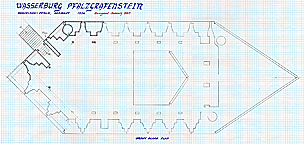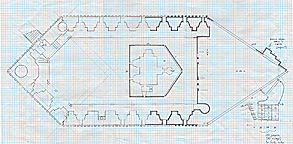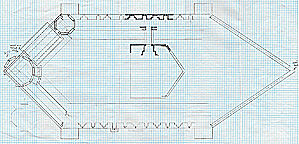#158 Burg Pfalzgrafenstein
Rheinland-Pfalz, Bavaria, Germany
1327 and 1339-42 and later
This
is NOT an official Lego site
 |
 |
 |
 |
|
Ground floor
Lego plan |
1st Floor Lego Plan |
2nd Floor
Lego Plan |
Turret Level Lego Plan was never drawn |
Other Wasser Burg Pfalzgrafenstein pages:
https://en.wikipedia.org/wiki/Pfalzgrafenstein_Castle
http://www.loreley-info.com/eng/rhein-rhine/castles/pfalzgrafenstein.php
http://www.skylarkviews.com/rhine/pfalzgrafenstein.html
Return to the
main castle
page.
Castles created by
Robert
Carney
Page designed & maintained by Robert Carney